I've previously discussed the use of steam, diesel and gas turbines for warship propulsion. During these discussions, I've mentioned benefits and drawbacks to each, and the obvious way to deal with this is to combine them, an option I've mentioned several times. Today, such combination plants are nearly universal, and it's time to take a closer look at the various ways that different propulsion systems have been made to work together.
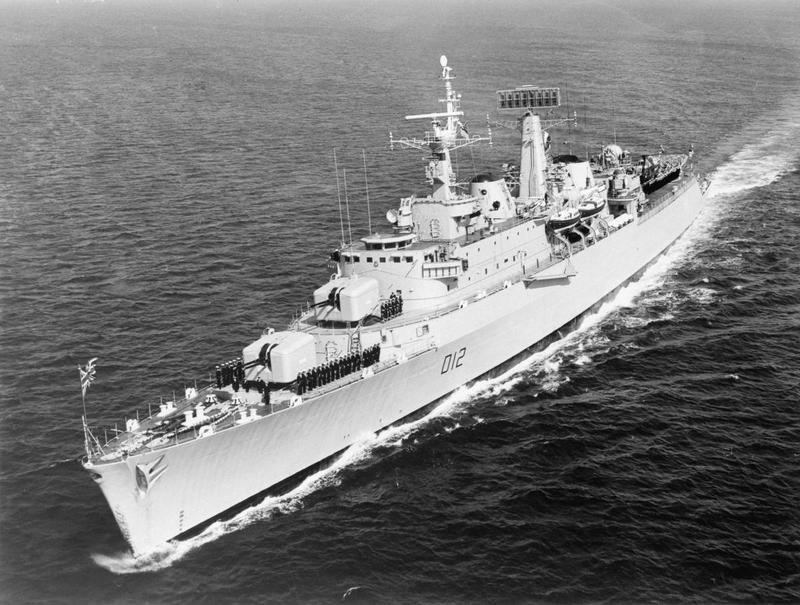
HMS Kent, an early COSAG ship
As there are a lot of these, it's first worth looking at the standard nomenclature used to describe them. All combination plants have a specific acronym, which starts with CO for "Combined", followed by a series of letters based on what sort of systems are being combined and how they are combined. For instance, many warships from around 1960 used a steam plant for cruising and added gas turbines for boost power, and their plants are described as Combined Steam And Gas, COSAG. Later, it became common to use one set of turbines for cruising, and take them offline when more speed was needed in favor of a second, more powerful, set of turbines, a system known as Combined Gas Or Gas, COGOG. If the same thing was done with diesels in place of the cruising turbines, it would be known as CODOG, or if both systems could work together, CODAG.
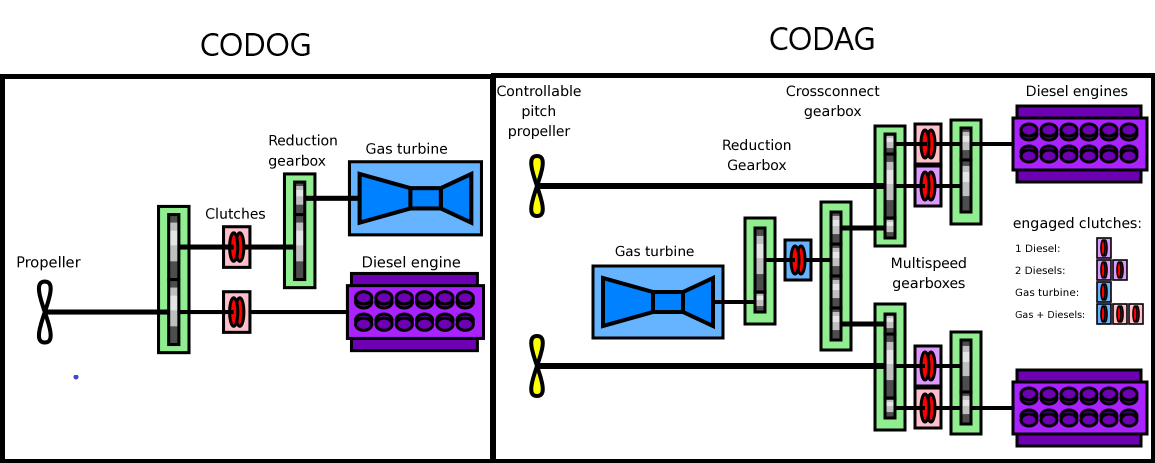
But what is the advantage to an "Or" system? Why ever use CODOG instead of CODAG? The answer is that what you lose in power, you often make up for in mechanical simplicity by not having to make the two halves of the plant work well together. With a CODAG plant, you have to make sure that the diesels work both on their own and when the shafts are turning significantly faster as the gas turbines kick in. This often involves a complicated gearbox that has multiple ratios, which is standard equipment in a car, but has only recently become practical for the tens of thousands of horsepower required in warship propulsion. CODOG plants just declutch the diesel plant when the gas turbines are switched on, and vice versa, making things much simpler.
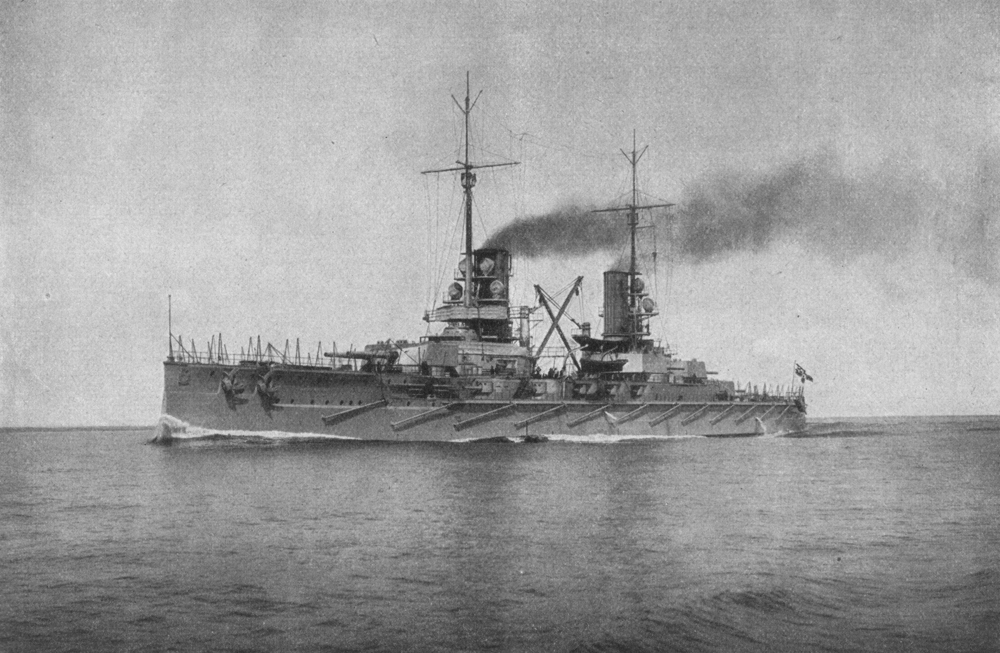
Prinzregent Luitpold
The first serious attempts at combination plants were made by the Germans in the years leading up to WWI. They intended to install CODAS plants on several of their battleships, starting with Prinzregent Luitpold, which would have received a diesel on her central shaft, with turbines on the wing shafts. This was apparently motivated by a desire to save money on both fuel and the installation itself, in the perennially cash-strapped Imperial German Navy. Problems with the diesel program meant that she was commissioned with nothing in that engine room, and plans to use diesels on later battleships repeatedly fell through as development dragged on from 1910 to 1917. The Japanese attempted a similar plan for the Yamatos, which fell through because of unreliability.
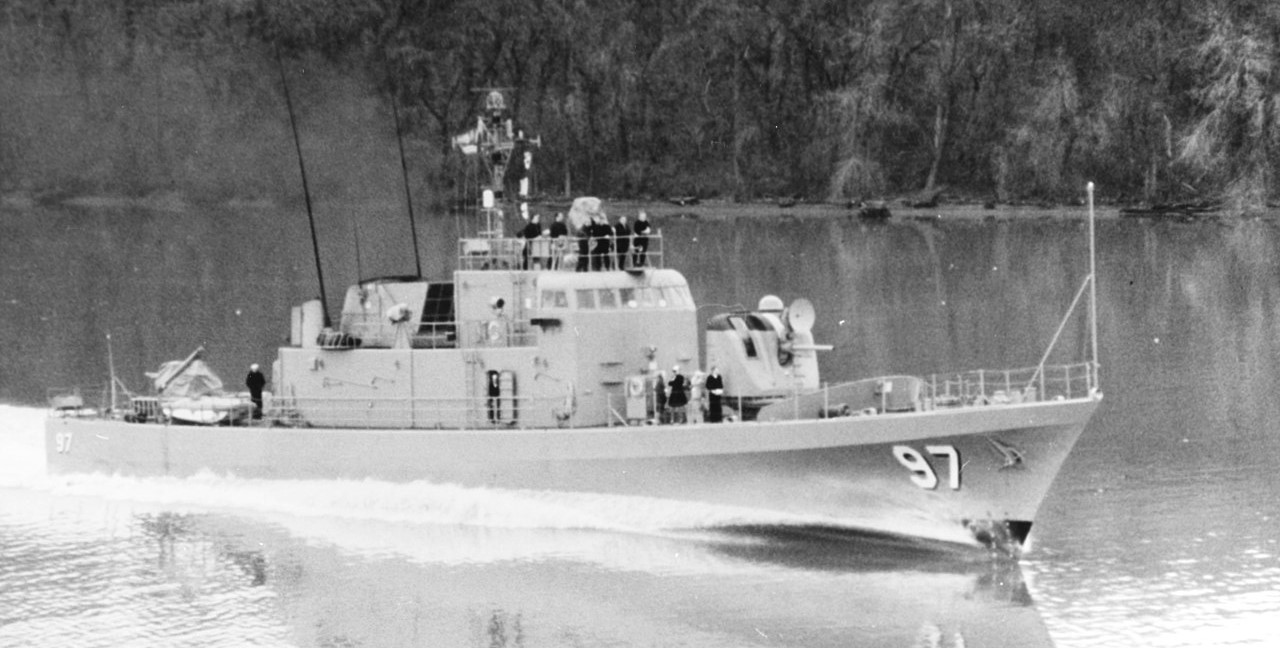
USS Surprise, a CODOG gunboat
Postwar, diesels and gas turbines both came into their own, and the use of combination plants grew dramatically. As previously mentioned, COSAG was used by many ships to combine the reliability and economy of steam with the high power of gas turbines, and CODOG followed shortly thereafter, becoming particularly common in smaller combatants designed for high speed. Usually described under the heading of combination plants are systems that use multiple engines of the same type on a given shaft, such as COGAG, and CODAD. All of these are driven by the fact that both diesels and turbines have poor fuel economy when throttled down, so it makes more sense to have multiple units and only run the ones you need for whatever you're doing right now. Usually, designers try to hold the number of units on each shaft down to only two, for space and weight reasons, which can be a problem if the power requirements for cruise are a long way from half of those for full power. The solution in this case is usually COGOG, with separate turbines of different types for cruise and full speed.
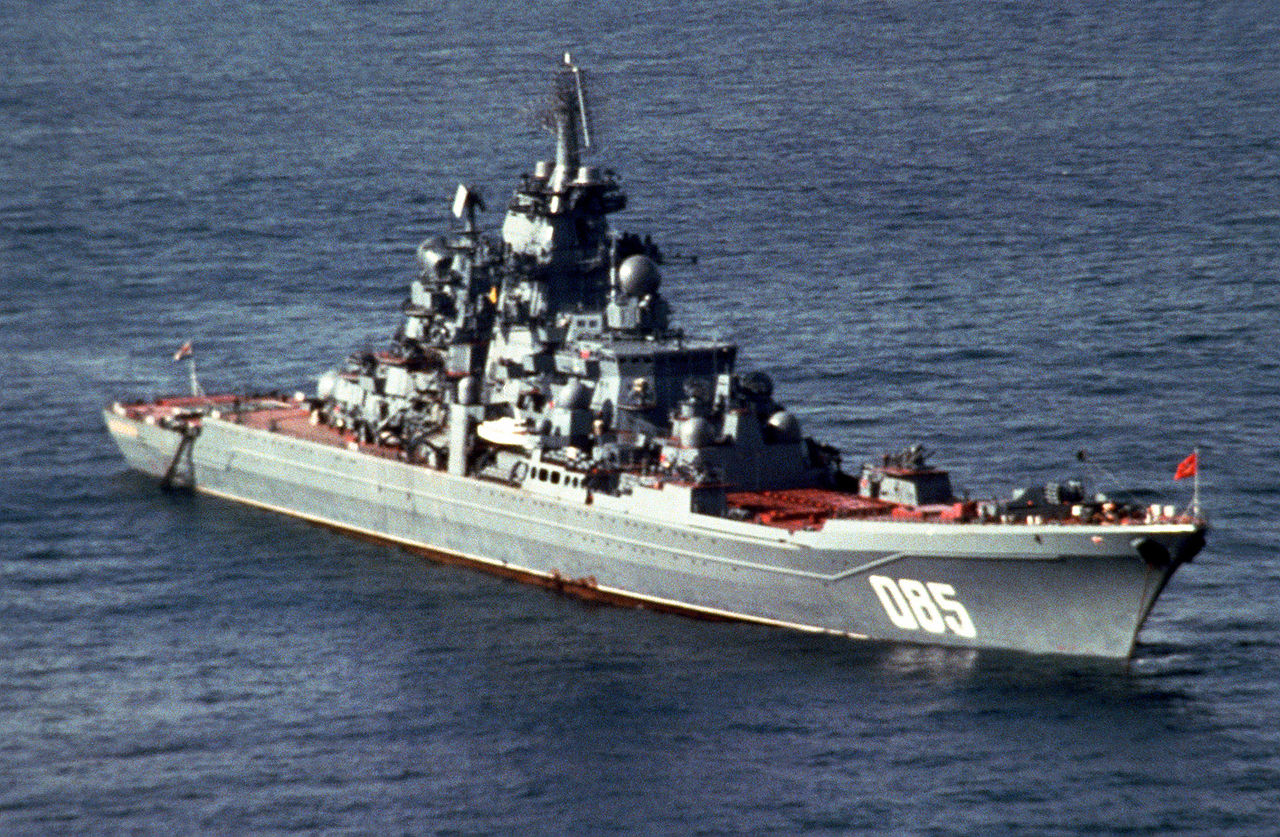
Kirov class cruiser
One particularly unique system is the CONAS (Combined Nuclear and Steam) plant installed aboard the Soviet Kirov class cruisers, by far the largest surface warships built since the end of the battleship era. The choice of the combined plant appears to have been driven by a desire for the unlimited cruising range of nuclear reactors, combined with limits on reactor production capacity and hull volume. The reactors produce about half of the ship's power, allowing it to cruise at ~24 kts indefinitely, with the oil-fired boilers providing a boost capacity to around 30 kts, with both systems feeding into the same set of turbines. The whole setup is a clever compromise, and one that might well make sense in wider use than it has seen or is likely to see, as ships rarely spend all that much time at full speed.
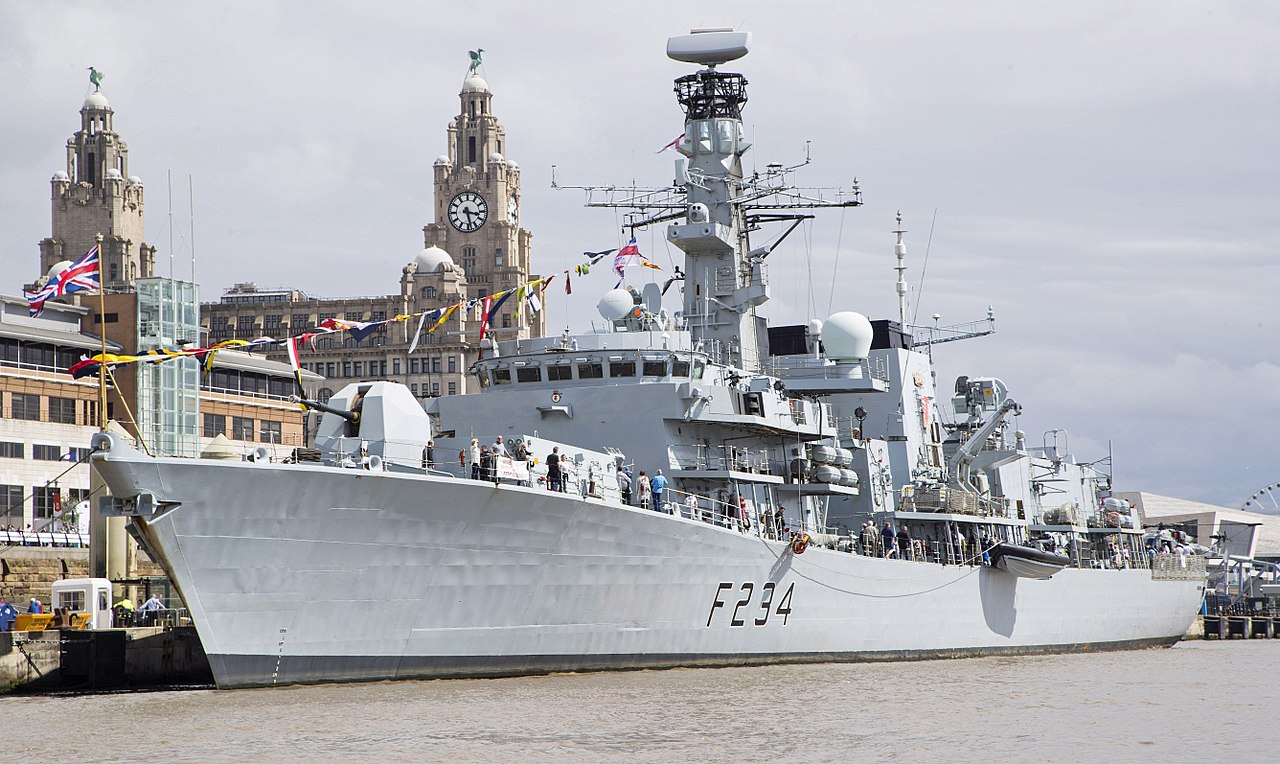
HMS Iron Duke, a Type 23
The biggest trend of the last 40 or so years is the return of electrical propulsion to the seas. While the first use of these systems dates back to before WWI, they were largely abandoned as geared turbines developed in the interwar years. It was only in the 70s that studies resumed, with the first I am aware of being for the Spruance class, which was originally designed around three LM2500 gas turbines, using electrical distribution to spread the power from the third turbine to both shafts. This was abandoned in favor of four turbines in the final design, and the trend during the late 80s and 90s was in favor of CODLAG, Combined Diesel-Electric and Gas. The first major example of this type was the British Type 23 frigate, where it was driven by extreme silencing requirements. Each shaft is connected to a 4,000 hp electric motor and a 26,000 hp turbine, with power for the motors coming from four diesel generators high in the superstructure. When listening for submarines, the turbines are shut down, and the diesels are far enough from the water that the Type 23s are among the quietest surface ships ever built. The electrical system also handles reversing, removing the need for controllable-pitch propellers. Since then, similar systems have become reasonably common on frigates, thanks to improved high-power electrical systems.
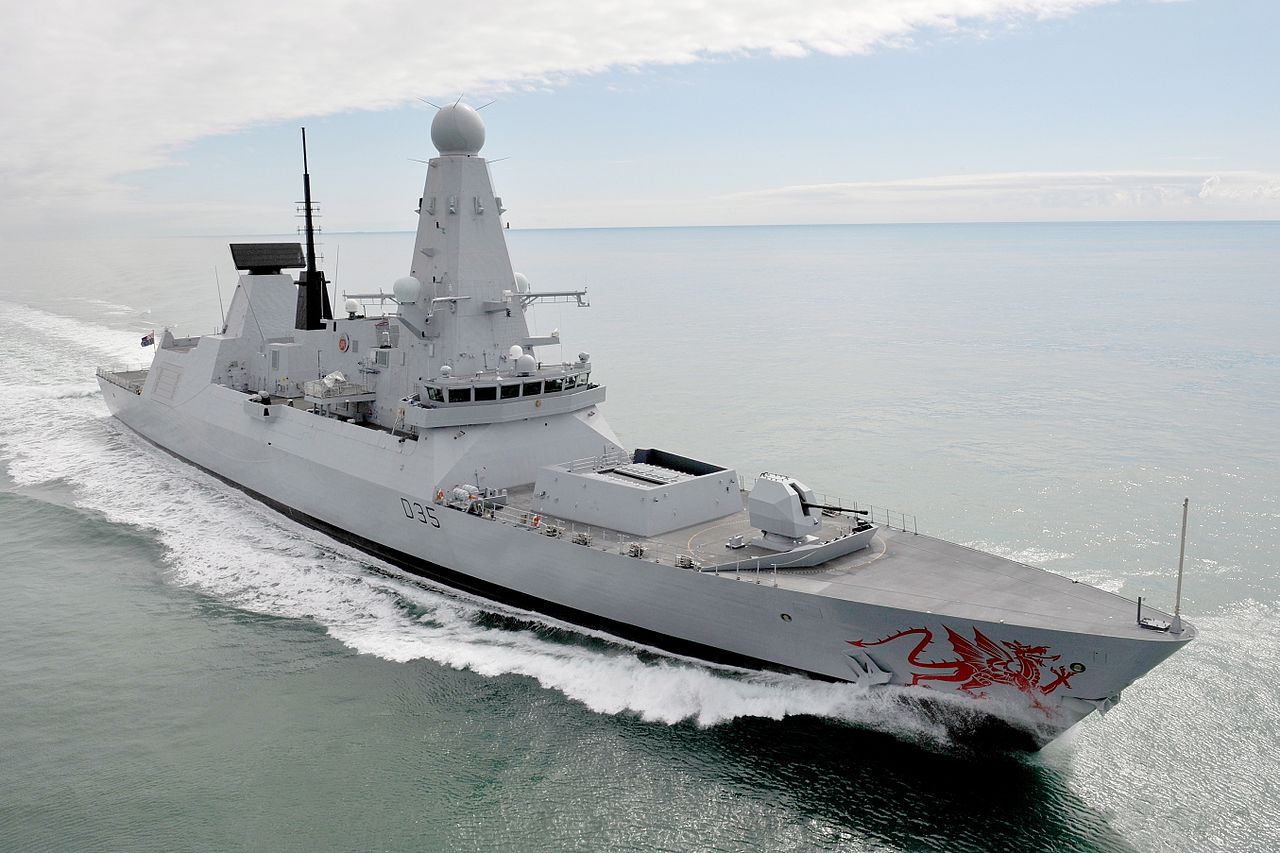
HMS Dragon, a Type 45 with some nice art
The most recent major development is integrated electric propulsion (IEP), where the shafts are turned entirely by electric motors, and all power sources, diesel, gas turbine or otherwise, feeding into the electrical grid. What makes IEP integrated and separates it from traditional turbo-electric or diesel-electric systems is the fact that the electrical system not only powers the motors but also provides all other electricity to run the ship. This means that an IEP vessel has a huge reserve of electrical power it can turn to uses other than propulsion, such as powering a laser or a railgun, and removes the need for separate engines and generators. The first large warship to use IEP was the British Type 45 destroyer, equipped with a pair of WR-21 advanced gas turbines each driving a 21 MW alternator and a pair of diesels with a 2 MW alternator, all feeding into a 4.16kV grid that drives a pair of 20 MW induction motors and an alternator providing 440V power for the ship's systems. While cruising, everything on the ship can be powered by a single turbine, and in harbor, the diesels can provide power for low-speed maneuvering.
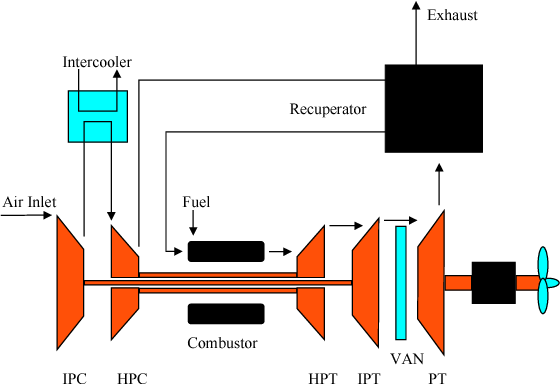
The WR-21 turbine
The WR-21 turbine is also a step forward in efficiency, as it adds new steps to the basic gas turbine cycle. It has two separate compressors, each driven by its own turbine,1 and an intercooler has been fitted between the two stages to reduce temperature and improve power, in theory by about 25%. To improve efficiency, the exhaust gas is sent through a regenerator, which removes waste heat and adds it to the air just before the fuel gets injected, which increases efficiency by about a third. Unfortunately, the WR-21s have proven troublesome in service, with the intercooler failing in the hot waters of the Persian Gulf. A third diesel was added, and other tweaks have been made to solve the problem.
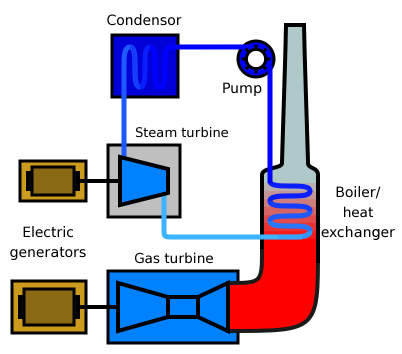
The RACER cycle, hooked up to electric generators
Nor is regeneration the only attempt that has been made to improve the efficiency of turbines. For a long time, the US was developing a system called RACER, for RAnike Cycle Energy Recovery. The Rankine Cycle in question refers to the traditional steam cycle, and the device basically consists of a steam plant where the steam is generated using the heat in the exhaust of the gas turbine, which in turn drives a steam turbine also coupled to the shaft. RACER, which had strong Congressional support due to a staffer on the Senate Armed Services Committee, was seriously considered for the Burkes, and the initial design was compatible with its installation. In practice, some of its longevity may have come from the space and weight reserved for the system, which died in the late 80s with the retirement of its main proponent.
But while I've covered most of the major developments in naval propulsion since WWII, there's one system I've only touched on briefly. Steam isn't entirely dead, although the majority of it used today is generated not by burning oil but by splitting atoms. The history of naval nuclear power will be our topic next time.
1 This has been common for a long time in aircraft engines, but hasn't seen much use at sea. ⇑

Comments
I always wondered why anyone would use COGOG rather than COGAG when engine space was at a premium, but "The Germans Tried It First" seems like universal shorthand for "it's much harder to do than it sounds".
Is there any meaningful amount of electrical storage for IEP systems, or do they still rely on throttling up and down and just use it in lieu of a mechanical transmission?
There's no storage. It's easy enough to just have the computer controlling the whole thing and running the throttles when you need more or less power.
That USS Surprise is adorable. It's like a little baby ticonderoga...
How did the USN end up using what I'd consider a "traditional RN" name like Surprise?
I'm not actually sure. She's of the Asheville class, which obviously were named after small towns. Except for a few that got other names, such as Surprise, Antelope, Defiance, Ready, Beacon and Marathon. Wiki gives no clue as to the weird naming scheme, nor does a quick check of the relevant Friedman.
After a quick look at Wikipedia’s disambiguation pages for these ship names, it seems that for each name there are multiple places named that way in the United States. The exception is Ready, were only one seems to have achieved sufficient notability. I wasn’t motivated enough to actually read the pages for the place names, however. I’d think the Marathon in Greece is quite famous, but there are more around the world.
Why wouldn't multispool aircraft engines adapted to naval use not do that given that many of them have more than just the fan on the low pressure shaft?
@Karsten
I'm pretty sure that at best you're doing what they did with LCS-1 and LCS-2, taking a name and finding towns to fit it. If I had to guess, the SecNav was feeling different on the different years when those ships were being bought, although the hull numbers don't quite seem to line up with that.
@Anonymous
As far as I can tell, nobody seems to have used three-spool engines at sea before the WR-21. (Two-spool engines usually drop to one when turned to gas turbines, but it's based on the RR Trent, which has three.) I believe this is because gas turbines operate under a narrower range of conditions than do aircraft engines, particularly around mach number and altitude, which means that the efficiency gains from the extra spool are smaller.
HMS Kent is one shapely ship, isn't she?
Also: what's hanging from the side of the Prinzregent Luitpold?
Those are the supports for a torpedo net. Intended to be deployed while the ship is stationary. In practice, they were a hassle to deal with, and tended to foul the screws when damaged.
Of course, another (so far theoretical) use for IEP is electromagnetic catapults. The Queen Elizabeth-class carriers use IEP powered by a combination of gas turbines and diesels- at various points in their development, there were plans to fit EMALS catapults to allow operation of the F-35C and possibly E-2C, where steam catapults would have required auxiliary boilers.
And regarding CODLOG or CODLAG, the RN's new Type 26 (City-class) frigates will be CODLOG, with a very similar propulsion system to the one currently in use on South Korea's Daegu-class frigates.
I'm not entirely sure of the reasons for this apparent step backwards- I think it's because the MT30 turbine is powerful enough on its own for any increase in power from the diesels not to be worth it. BAE have made noises about potential export customers replacing the gas turbines with diesels for a slower, cheaper ship- though Australia and Canada have both kept them.
More detail on T26 propulsion here.
"Surprise, Antelope, Defiance, Ready, Beacon and Marathon"
Sounds like a list of frigates on Bermuda Station to me. I wonder if someone on the USN's Naming Board is a closet Hornblower fan, and then went looking for towns to match...
Would the crew of the Antelope prefer to be in Sherbrooke now, though?
Could be. The names are mixed in throughout the run over 2-3 years worth of ships, so I suspect there was some sort of compromise between someone who wanted one scheme and someone who wanted another. And yes, I'm sure they would rather be in Sherbrooke now.
A billion for an ASW frigate? Are they going to ask the queen to look for loose change under her throne cushions so they can afford a second one?
I guess the diesels are powering ship systems rather than sitting idle when the frigate is running on the turbine, especially if they really are thinking about firing ze lasers. When you look at the schematic, it's a lovely compact system
It makes more sense the more you think about it, which is a nice change from most military procurement.
Yeah, I was thinking something similar. You get most of the benefits of IEP without having to set up a full IEP system. I suspect that the issues of the Type 45 may have soured them on that a bit.
Is the cost a function of high development costs split over 8 ships? Or are they inherently expensive to build? If the marginal cost of an extra frigate is unusually high, it's quite interesting that they managed export orders. The US went for the FREMM based design, which seems to be costing them less, though that could just be due to a better shipbuilding industry. If it's not significantly more expensive than other designs (or less capable in some way) it's a shame the US didn't consider it for the FFG(X), just for commonality's sake. There are a reasonable number of FREMM about too, but I expect that they'll be mostly operating in the Mediterranean.
αγ:
The ships the Type 26s will replace in RAN and RCN service are CODOG so probably not a surprise.
These days, the cost isn't that bad. It's half that of a Burke, and not too different from what the US is paying for the FFG-62s. Modern, sophisticated warships are expensive.
That's Congress's fault. They were fed up with the USN's procurement messes, and required that the FFG(X) competitors be designs which were actually in service. There are rumors that the second batch of ships will be competed between the FREMM and the Type 26.
Presumably there are some significant performance compromises with the type 31 (or wishful thinking) in order to keep the cost down then?
I'm not sure switching to type 26 for the second batch would be a good move, as it's probably more important to maintain commonality with the rest of their frigates.
The big compromise is in ASW capability, which Type 26 has and Type 31 largely doesn't. And yes, high-end ASW does cost that much. There's other aspects (big VLS, gun, etc) but the ASW system is going to be the biggest item there. As for switching USN FFGs, I'm rather with you on that. I think the Type 26 design is probably very good, but so is FREMM and commonality should win the day.
So if it doesn't have ASW, and it's not an anti-aircraft monster, what does it do? Sink French fishing boats when EU negotiations break down?
More or less. The serious answer is that the Type 31 can be seen as the minimum modern warship. It's capable of showing the flag without embarrassment, surviving moderate threats (it does have SAMs in case someone lobs a few missiles at it) and operating a helicopter. Perfectly adequate for fighting pirates off Somalia or other presence missions, and reasonably capable in a warm war, even if it isn't what you'd pick if the war turned hot.
Oh, I had the types mixed up, and didn't realize the 31 costs only(!) a quarter billion pounds. That's quite a deal, and much closer to the "cheap fire scout carrier" I was mulling over in the FFG(X) thread.
Lots of storage under the flight deck, maybe with enough room to get spare drones up to the hangar? Definitely a ton of enclosed boat space for USVs.
I'm curious how well that kind of cheap heli-drone carrier with a mission pack would complement a proper ASW ship like the 26, now that fire scouts can drop sonobuoys. Wonder if it has a tactical VLS for extra ASROCs, or just the mini size.